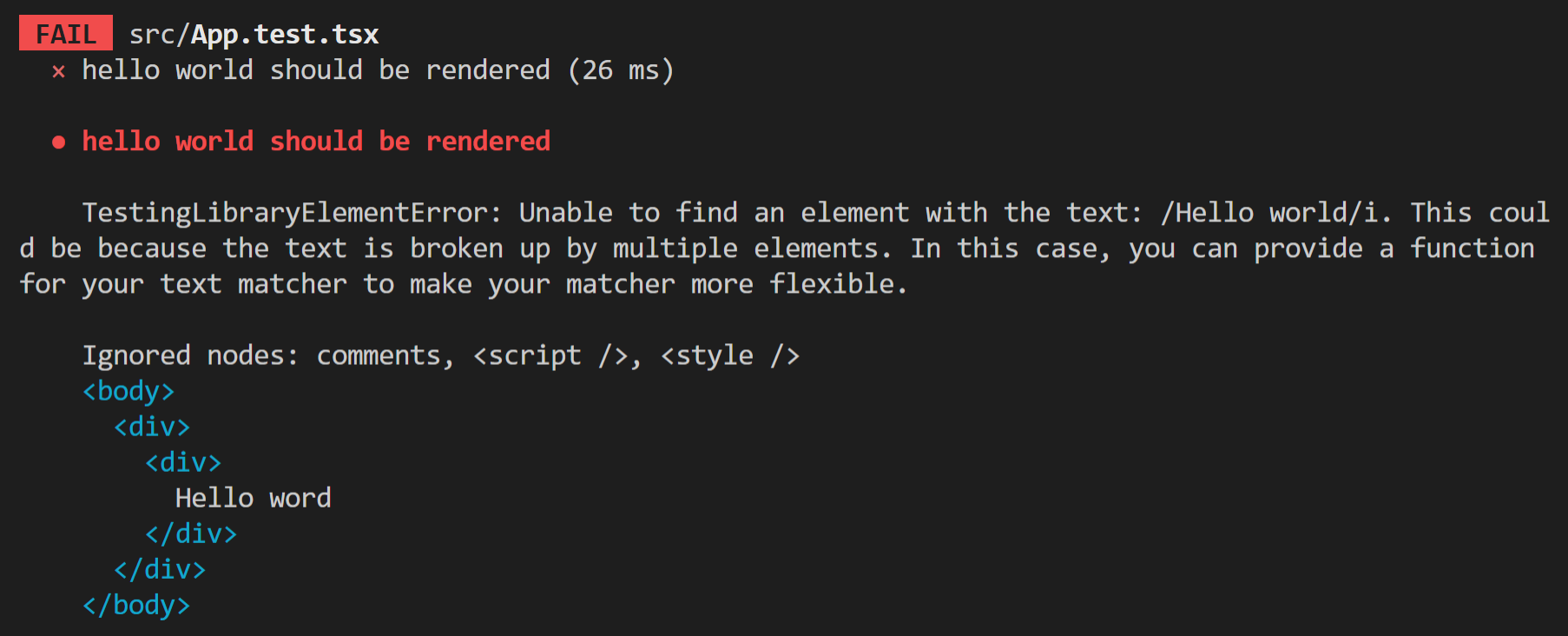Free React Course
For Beginners
L11 - Testing Your Code
React For Beginners by Itera
Key Points
- Why test
- Testing pyramid
- What should be tested
- Testing with Jest
Why test
Find mistakes earlier
People do mistakes, that's normal.
Tests help you identify mistakes in earlier stages which makes fix much more easy.
Prevent from new mistakes
Code is a subject to change. When changing, it's easy to forget update something related or break something else.
Tests prevent accidental bugs.
Code is cleaner
Writing tests, you will eventually use the code. If the code is hard to test - this is a spot that code will be hard to use.
Tests highlight bad code smells.
Code is better
Writing tests, you are thinking about edge cases - errors, fails and other crap happening in a real life.
Tests make you think more about your code.
Tests are crucial for the business because of Time to Market
Business want to deliver features as fast as possible, better - yesterday. Manual testing is slow. No testing is risky.
Tests find bugs fast. Everybody happy.
Testing pyramid

Unit tests - the most popular and the most fastest tests
Unit tests exists to test a single unit behavior in full isolation
Code for a unit test
const calculate = (income, percentage) => income * percentage Single component also a good candidate for the unit test
const Greeter = ({name})=> hello {name}
Integration tests
Integration tests exists to check, how does your components interact with each other.
Code for a integration testing
import { calculatePercentage } from './percentage-calculator';
import { calculateFullPrice } from './price-calculator';
export function someComplexCalculations() {
const percentage = calculatePercentage(5000, 25);
return calculateFullPrice(1000_000, percentage);
}
Forms, complex blocks also a good candidates for the integration tests
UI testing
UI tests - usually tests some workflow, but in isolation from the real data.
Cypress, Playwright are good tools to help you with
End to End tests - most complex and time consuming testing
E2e tests testing the whole business scenario. From page load to desired action. Backend, DataBase are included
E2E tests that the whole application works as expected
End to end tests are most expensive and most useful
What should be tested
Wrong statement: You should test business rules
Right statement: You should test things crucial to the business
Obvious cases to test
- Unit tests - math, regex, important data on the screen
- Integration testing - reactions, transaction, important behavior
- E2e tests - most important business scenarios - charge, checkout, submit, etc
Shouldn't be tested
- Internal realization - you should tests the expected result, - not the way it was achieved
- Internal API and third party libraries
- Each and every aspect of your code - test the most crucial one
100% Code coverage is a myth
Because...
const add = (a,b)=> a+b;const sum = add(1,1);
expect(sum).toBe(2)You missed
- null/undefined/NaN
- Non numbers e.g. string, objects, arrays
- MAX_SAFE_INTEGER
Testing with Jest
Before we go - good test consists of:
- Arrange - preparations (data, mocks)
- Act - execution the tested code (render, click, fetch)
- Assert - checking the results
Tests live in a separate files like App.test.tsx
Update App.tsx with the next code
const App = () => <div>Hello word</div>;
export default App;
Update App.test.tsx with the next code
import { render, screen } from "@testing-library/react";
import { act } from "react-dom/test-utils";
import App from "./App";
test("hello world should be rendered", () => {
act(()=> { render(<App />); }); // act
const greeting = screen.getByText(/hello world/i); // assert
expect(greeting).toBeInTheDocument(); // assert
});
This is your first unit test
This unit tests checks existence of the text on the screen
Start tests with npm test

Test failed because we did a typo in the component.
That is how the tests works.
Test which never fail is a bad test
Real life example
type MoneyFormatterProps = {
amount: number;
};
export const Money = ({ amount }: MoneyFormatterProps) => (
<>{amount.toFixed(2)}</>
);
Test
import { render, screen } from "@testing-library/react";
import { act } from "react-dom/test-utils";
import { Money } from "./money.formatter";
test("Money should format 50 with two decimals - 50.00",()=> {
const amount = 50; //arrange
act(()=>{ render(<Money amount={amount} />);}); //act
const formatted = screen.getByText("50.00");
expect(formatted).toBeInTheDocument(); //assert
});
What if we pass 0?
Is 0.00 desired behavior?
This is how tests works - giving you hints!
How to test that callback was called
import { render, screen } from "@testing-library/react";
import { act } from "react-dom/test-utils";
import { Btn } from "./Btn";
it("when btn clicked, callback should be called", () => {
const spy = jest.fn();
act(()=> { render(<Btn onClick={spy}>Test</Btn>);})
screen.getByText("Test").click();
expect(spy).toHaveBeenCalled();
});
Hot to test classes, layout, elements?
Snapshot testing
npm i react-test-renderer @types/react-test-renderer -Dimport { Btn } from "./Btn";
import renderer from "react-test-renderer";
it("snapshot", () => {
const tree = renderer.create((
<Btn onClick={() => null}>Test</Btn>)
).toJSON();
expect(tree).toMatchSnapshot();
});

Don't forget to commit your snapshots!
How to tests that everything looks as should?
Automated visual regression
Comparing pixel to pixel with master snapshot
The End
Wait, what if my component depends on other module?
- Use inversion of control
- Mock the module
Example
export const greeting = () => `hello: `;import { greeting } from "./greeter";
type Props = { name: string };
export const AppGreetings = ({ name }: Props) => (
<>{`${greeting()}${name}`}</>
);
Inversion of control - most preferable way
type Props = { name: string; greeter: () => void };
export const AppGreetings = ({ name, greeter }: Props) => (
<>{`${greeter()}${name}`}</>
);
Use mock
jest.mock("./greeter", () => ({
__esModule: true,
greeting: () => "mocked",
}));
it("greetings should work", () => {
act(() => {
render(<AppGreetings name="testName" />);
});
expect(screen.getByText("mockedtestName"))
.toBeInTheDocument();
});If tests are so cool, why nobody* wrights test?
Tests slowdown new development
Obviously, to write a test, you need some time. And in this moment, the new feature you just wrote, is waiting
Usual business don't want to wait till you write a test
Test requires extra time for maintenance
Code is subject to change which means that tests are subject to update. Updating tests costs your time, and money for business
Tests are hard to write
You need to cover a lot of edge cases, you need to cover different combinations, you need to split components into the smallest parts. Laziness is also a reason.
Does this means that we are OK to skip tests?
It depends. If you are writing one-time script or a tiny obvious app - feel free to skip testing
If the app is subject to grow and requires maintenance, or it touches sensitive things like money or health - please test
Typical mistakes
Writing only happy cases
You should always consider, what if something went wrong - network, user input, etc
Writing fragile tests
Don't test the implementation - test only results that are important to the business
Multiple assertions
Ideally you should have a one assert in the test. It's not something a must but having massive assertions will lead to harder maintenance
TDD - test driven development
TDD - extreme programming paradigm when you write a test first
- Write a test which eventually will fail - no code yet
- Write a code that will pass the test
- Refactor the code
- Go to p.1
Pros
- TDD ensures that each and every part of the code is tested
- TDD allows you to refactor safely